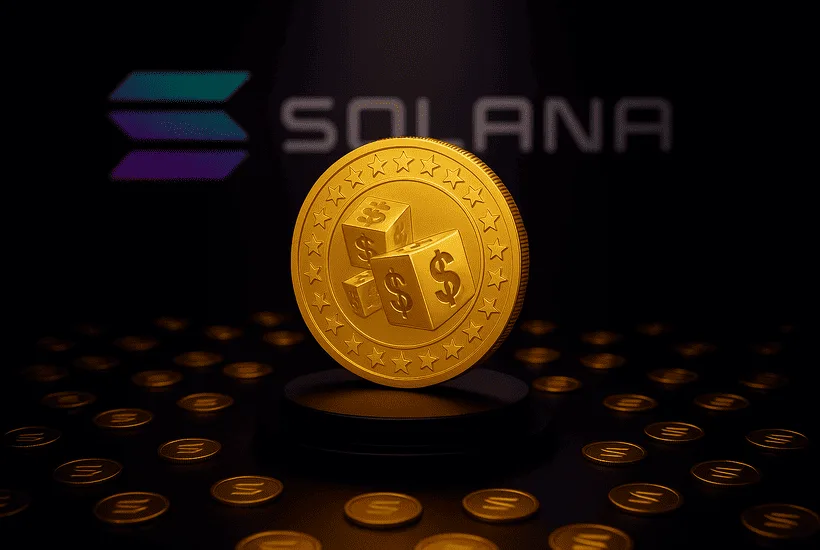- Luckycoin has formed a strategic initiative with Scrypt Wallet to bridge its LKY token into the Solana ecosystem.
- After lying dormant for over a decade, Luckycoin was resurrected in August 2024 by a community-led team.
- Luckycoin boasts a capped supply of roughly 20 million LKY, making it scarce and more appealing.
Luckycoin, once a dormant memecoin with Genesis block lineage dating back to 2013, is staging a bold comeback. Luckycoin has formed a strategic initiative with Scrypt Wallet to bridge its LKY token into the Solana ecosystem. This move could reconnect LKY with one of Web3’s fastest-growing platforms, making it accessible on DEXs, Protocols, and high-speed decentralized applications.
Does Lucky need Solana?
Solana has become a magnet for memecoins and DeFi thanks to ultra-fast transaction speeds, low fees, and strong developer support. Its infrastructure supports thousands of transactions per second, often costing less than a cent. For LKY, bridging to Solana could inject new utility and value. Holders can trade, stake, or use tokens in DeFi protocols and DEXs. This could revitalize the token beyond mere nostalgia and leverage Solana’s booming ecosystem to restore trust and momentum.
What is Luckycoin?
For the uninitiated, Luckycoin was launched in May 2013 by an anonymous creator. The creator of Luckycoin embedded the financial headline of the day in the genesis block, just like how Satoshi Nakamoto did with Bitcoin. It is the same chain from which Dogecoin was forked.But over the years, it lost relevance, until 2024, when it witnessed a Community Takeover (CTO)
Newsletter
Get weekly updates on the newest crypto stories, case studies and tips right in your mailbox.
The community wanted to continue building on the original chain and maintain an unbroken link to crypto history. So they mined Block 81744 on August 25, 2024, which followed Block 81743 that was built in 2013, thus preserving the genesis block. They later enabled merge mining with Dogecoin and Litecoin via Auxiliary Proof-of-Work (AuxPoW), bringing the legacy coin back to life while retaining its historic identity.
2024 Replay attack
But the chain faced another roadblock. In late 2024, a replay attack exploited transactions from the legacy chain. This drained ~2.68 million LKY from dormant wallets and sent prices crashing by ~95%. A replay attack happens when 2 chains share an identical history. The team managed to patch the vulnerability by January 2025, by blacklisting affected addresses and applying replay protection.
How Luckycoin pays and plays
If you look at Luckycoin tokenomics, there is a capped supply of 20 million LKY. About 8 million tokens were mined initially, while the rest are being mined post its revival in 2024. In fact, a significant portion of tokens are permanently inaccessible due to lost or blacklisted addresses. This makes its circulating supply particularly scarce.
As for halving, that takes place every 100,000 blocks or in ~69 days. Back in the day, rewards started at 88 coins per block and one could randomly get a higher reward too. In April 2025, rewards were halved to 5.5 coins per block. LKY made mining more fun and unpredictable, showing the creator’s goal to bring something fresh and exciting to the crypto world.
Memecoin market trends
Dogecoin (DOGE) continues to reign in the meme coin ranking, trading at around $0.2048 with a market cap of approximately $31 billion. In the last 24 hours, DOGE surged 8% to approximately $0.22 amid heavy whale buying with trading volumes exceeding $1 billion. Interestingly, it was only on 22 May, 2025 that Psy launched the first trustless bridge from Dogecoin (DOGE) to Solana (SOL). This showcased that cross-chain bridges have an important role to play in blockchain interoperability.
As Luckycoin charts a comeback, its nearing Solana bridge marks a critical pivot toward modern crypto relevance. By integrating with Solana, Luckycoin not only gains access to high-speed DeFi and NFT ecosystems but also repositions itself as a functional, legacy-rich asset with real utility.













